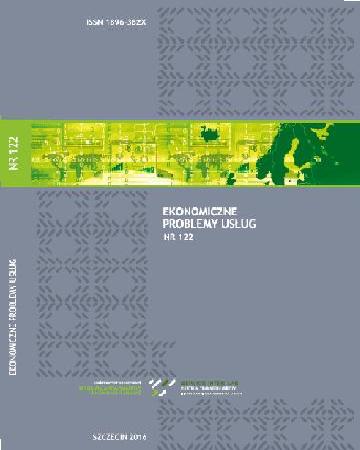
ISSN: 1896-382X
eISSN: 2353-2866
OAI
DOI: 10.18276/epu.2017.126/2-18



Lista wydań /
nr 126 (2) 2017
Doświadczanie agresji słownej w cyberprzrestrzeni wśród cyfrowych tubylców
| Autorzy: |
Marta
R.Jabłońska
Uniwersytet Łódzki Wydział Ekonomiczno-Socjologiczny Instytut Ekonomik Stosowanych i Informatyki Katedra Informatyki Ekonomicznej |
| Słowa kluczowe: | agresja słowna cyfrowi tubylcy cyberprzemoc |
| Data publikacji całości: | 2017 |
| Liczba stron: | 9 (175-183) |
| Klasyfikacja JEL: | K24 L86 Z13 |
Abstrakt
W artykule skoncentrowano się na zjawisku agresji słownej przejawianej w internecie wobec ludzi młodych. Cyfrowi tubylcy, wykazując narastający poziom immersji w cyberprzestrzeń, stają się bowiem grupą szczególnie podatną na ataki cyberagresorów. Celem artykułu jest dokonanie podsumowania wielu badań tego zjawiska wśród adolescentów przeprowadzonych przez autorkę w ciągu kilkunastu miesięcy. Wyniki ukazują stopień, zbiór doświadczeń i postaw oraz angażowania się w praktyki agresji słownej w internecie.
Pobierz plik
Plik artykułu
Bibliografia
| 1. | Aumer-Ryan, K„ Hatfield, E. (2007). The Design of Everyday Hate: A Qualitative and Quantita¬tive Analysis. Interpersona, I (2), 143-172. |
| 2. | Balci, K„ Salah, A.A. (2014). Automatic analysis and identification of verbal aggression and abusive behaviors for online social games. Computers in Human Behavior, 53, 517-526. |
| 3. | Banks, J. (2011). European Regulation of Cross-Border Hate Speech in Cyberspace: The Limits of Legislation. European Journal of Crime Criminal Law and Criminal Justice, I9, 1-14. |
| 4. | Chiang, Y-T„ Lin, S„ Zhi-Feng, L.E. (2012). The effects of online discussion forum aggressive messages and cognitive distortion on usersll.l.egative affect and aggression. Turkish Online Journal Of Educational Technology, II (2), 238-245. |
| 5. | Collins, E„ Freeman, J„ Chamarro-Premuzic, T. (2012). Personality traits associated with prob¬lematic and non-problematic massively multiplayer online role playing game use. Per¬sonality and Individual Differences, 52, 133-138. |
| 6. | Erjavec, K„ Kovaćić, M.P. (2012a). "You Don't Understand, This is a New War!" Analysis of Hate Speech in News Web Sitesm:'.omments. Mass Communication and Society, 15 (6), 899-920. |
| 7. | Erjavec, K„ Kovaćić, M.P. (2012b). Journalism and the Internet. Teorija in Praksa, 49, 190-203. Harris, C„ Rowbotham, J„ Stevenson, K. (2009). Truth, law and hate in the virtual marketplace of ideas: perspectives on the regulation of Internet content. Information & Communications Technology Law, 18 (2), 155-184. |
| 8. | Lee, J. (2008). Unravelling the dynamics and trends of social capital: Case of South Korea. Asian Journal o/Social Psychology, II, 105-115. |
| 9. | Levmore, S„ Nussbaum, M.C. (red.). (2011). The Offensive Internet: Speech, Privacy, and Repu¬tation. Boston: Harvard University Press. |
| 10. | Lincoln, R.A., Wilson P. (2005). Contemporary comment: An examination of Australian internet hate sites. Humanities & Social Sciences Papers. Pobrane z: http://epublications.bond. edu.au/hss_pubs/39 (27.12.2016). |
| 11. | Liu, E.Z.F„ Ko, H.W. (2007). Implementation and evaluation of an e-tutor program. WSEAS Transactions on Communications, 6 (4), 547-552. |
| 12. | Markey, P.M., Markey, C.N. (2010). Vulnerability to violent video games: A review and integra¬tion of personality research. Review of General Psychology, 14, 82-91. |
| 13. | McDevitt, J., Levin, J., Bennett, S. (2002). Hate crime offenders. Journal of Social Issues, 58, 303-317. |
| 14. | Nasi, M., Rasanen, P., Rawdon, J., Oksanen, A, Holkeri, E. (2015). Exposure to online hate material and social trust among Finnish youth. Information Technology & People, 28 (3), 607-622. |
| 15. | Nowak, A., Krejtz, K. (2006). Internet z perspektywy nauk społecznych. W: D. Batorski, M. Marody, A Nowak, (red.), Społeczna przestrzeń Internetu (s. 1-15). Warszawa: |
| 16. | Academica. |
| 17. | Okansen, A, Rawdon, J., Holkeri, E., Nasi, M., Rasanen, P. (2014). Exposure to Online Hate among Young Social Media Users. W: M.N. Warehime (red.), Soul of Society: A Focus on the Lives of Children & Youth (Sociological Studies of Children and Youth, Vol. 18, s. 253-273). Oklahoma City: Emerald Group Publishing Limited. |
| 18. | Perry, B., Olsson, P. (2009). Cyberhate: The Globalization of Hate. Information and Communica¬tions Technology and Law, 18 (2), 185-199. |
| 19. | Prensky, M. (2001). Digital Natives, Digital Immigrants. On the Horizon, 9 (5). Pobrane z: http://www.marcprensky.com/writing/Prensky%20-%20Digital%20Nat ives,%20Digi tal%20Immigrants%20-%20Partl .pdf (27.12.2016). |
| 20. | Pyżalski, J. (2009). Agresja elektroniczna dzieci i młodzieży - różne wymiary zjawiska. Dziecko Krzywdzone, 1 (26), 12-26. |
| 21. | Sabatini, F., Sarracino, F. (2014). Online networks destroy social trust. Pobrane z: http://arxiv.org/abs/1409.0267 (27.12.2016). |
| 22. | Schleb, C., Preuss, M. (2016). Governing hate speech by means of counterspeech on Facebook. |
| 23. | Materialy konferencyjne 66th ICA Annual Conference. Fukuoka, Japonia, s. 1-23. |
| 24. | Steinfield, C., Ellison, N.B., Lampe, C. (2008). Social capital, self-esteem, and use of online social network sites: A longitudinal analysis. Journal of Applied Developmental Psychol¬ogy, 29, 434-445. |
| 25. | Suler, J. (2004). The online disinhibition effect. Cyberpsychology & Behavior, 7 (3), 321-326. Tereszkiewicz, A (2012). Do Poles flame? Aggressiveness on Polish discussion groups and social networking sites. W: L. Laineste, D. Brzozowska, W. Chlopicki (red.), Estonia and Poland Creativity and tradition in cultural Communications. Jokes and their relations, 1 (s. 237-268). Tartu: ELM Scholarly Press. |
| 26. | Vivolo-Kantor, AM., Martell, B., Holland K., Westby R. (2014). A Systematic Review and Content Analysis of Bullying and Cyber-bullying Measurement Strategies. Aggression and Violent Behavior, 19 (4), 423-434. |